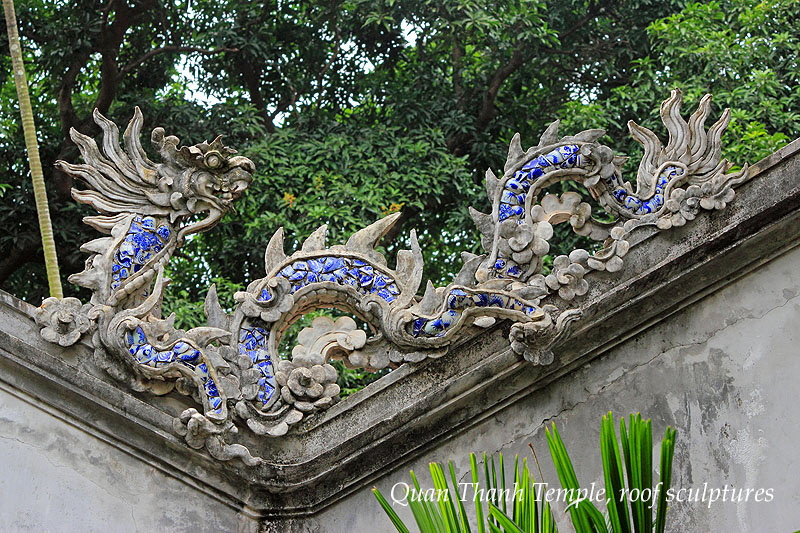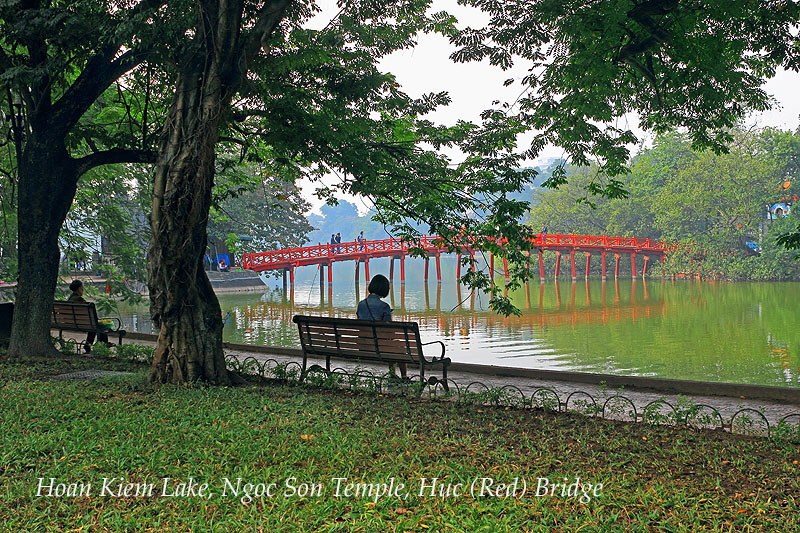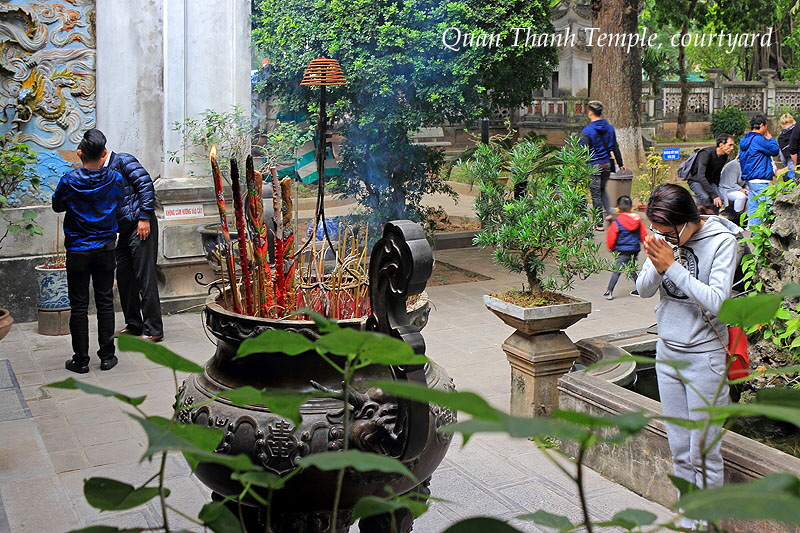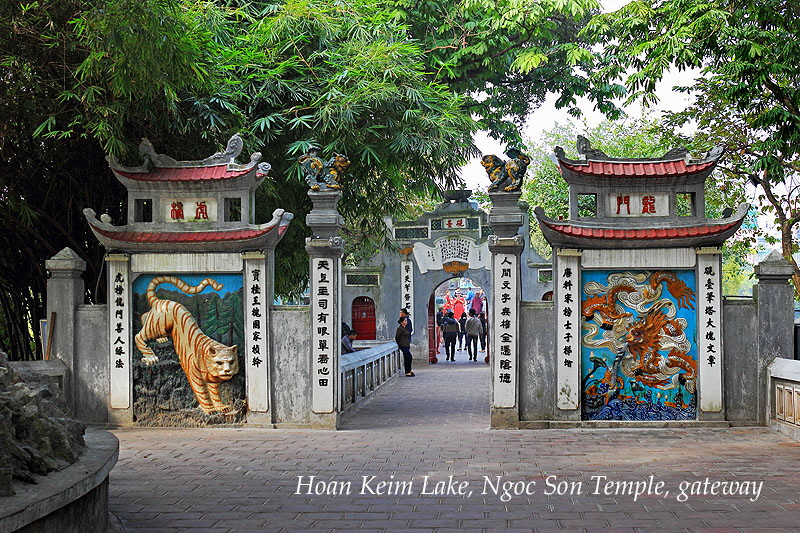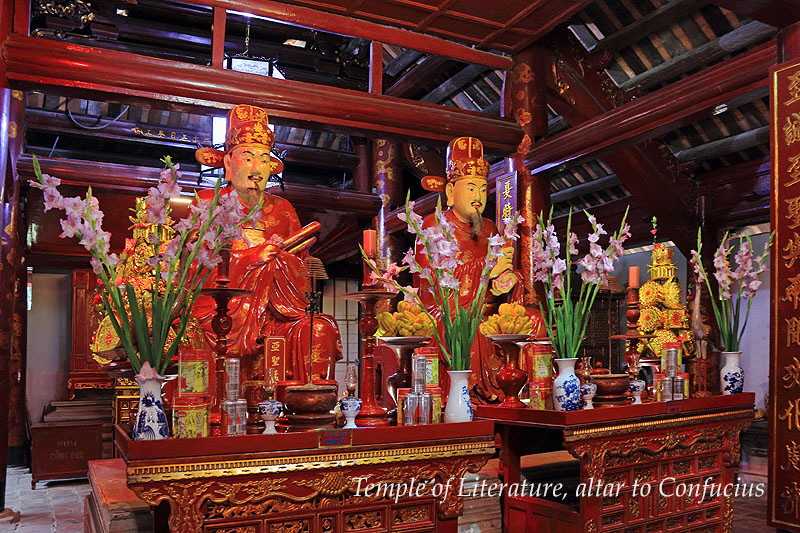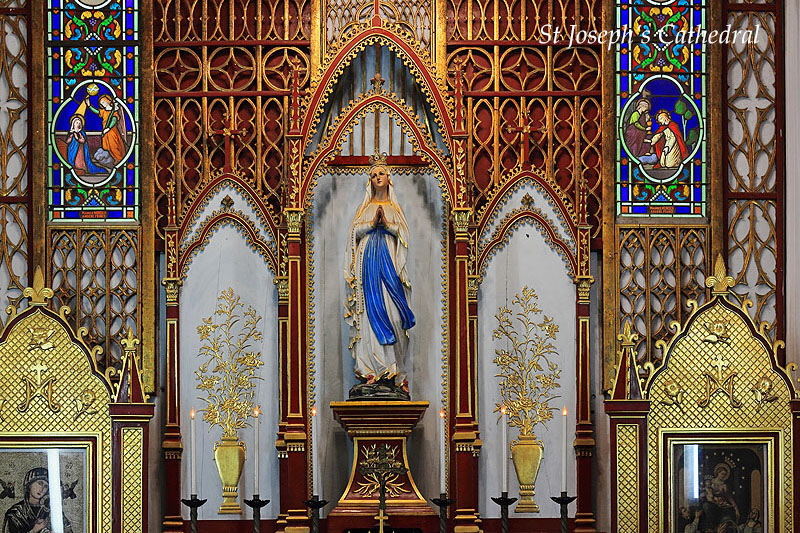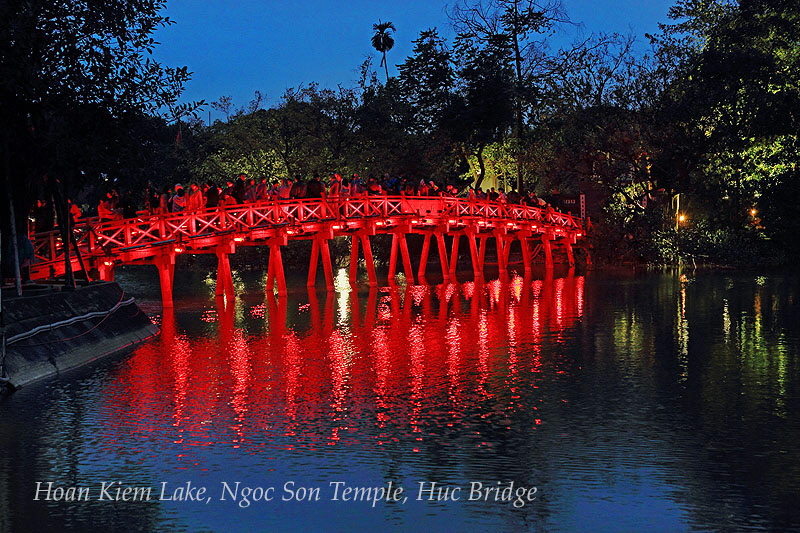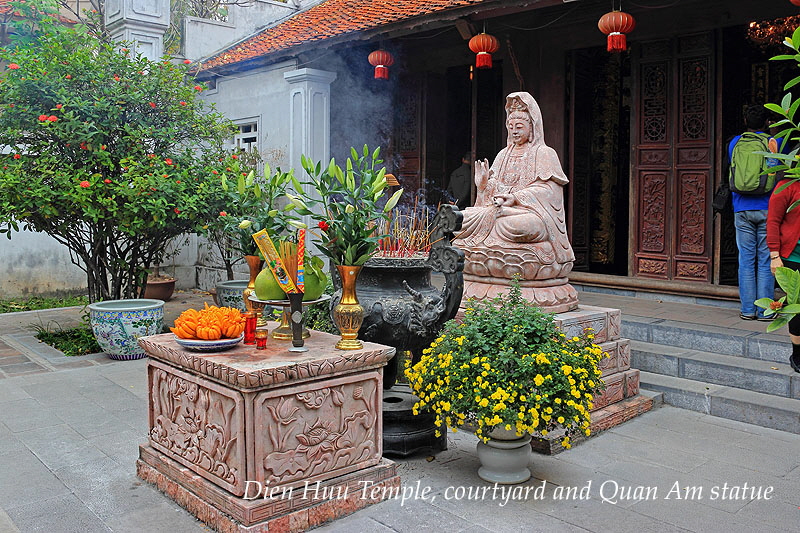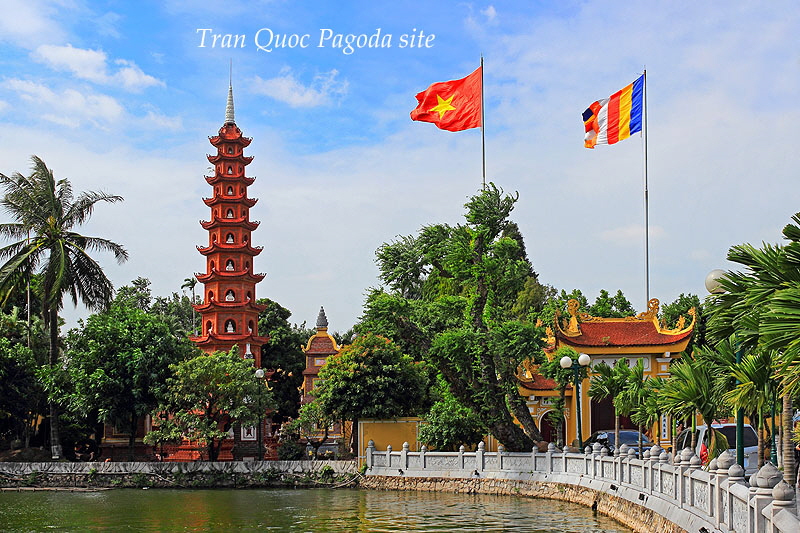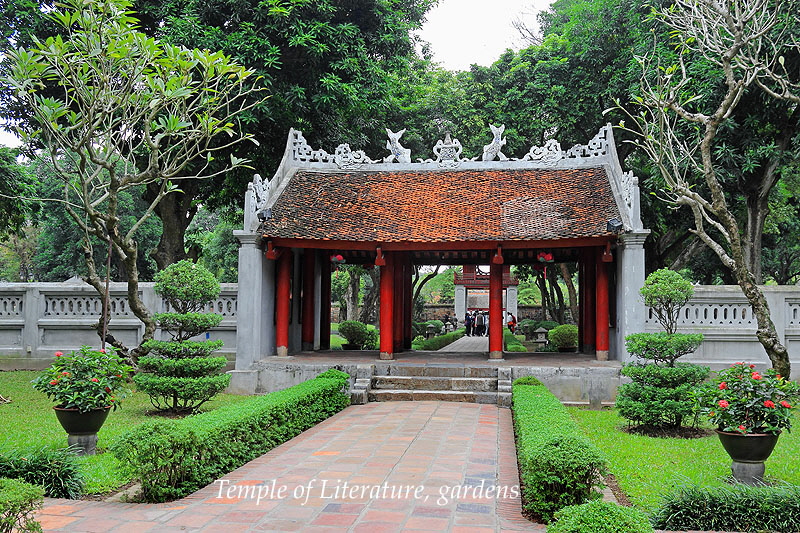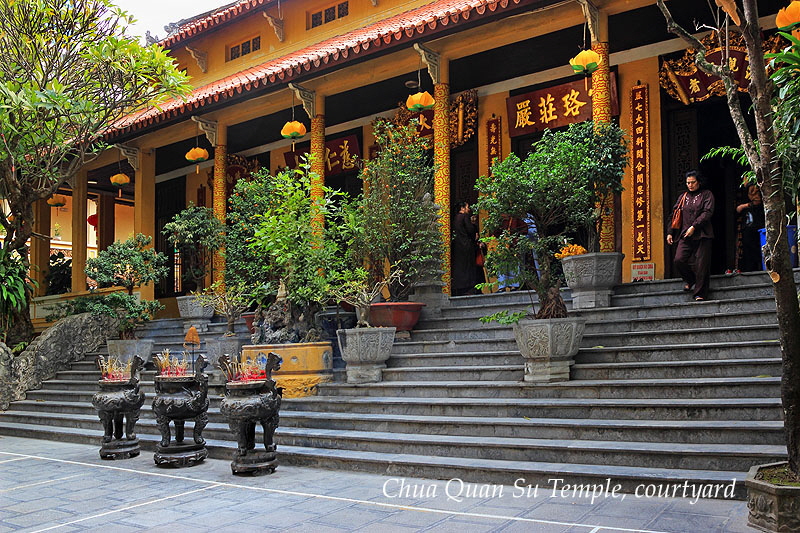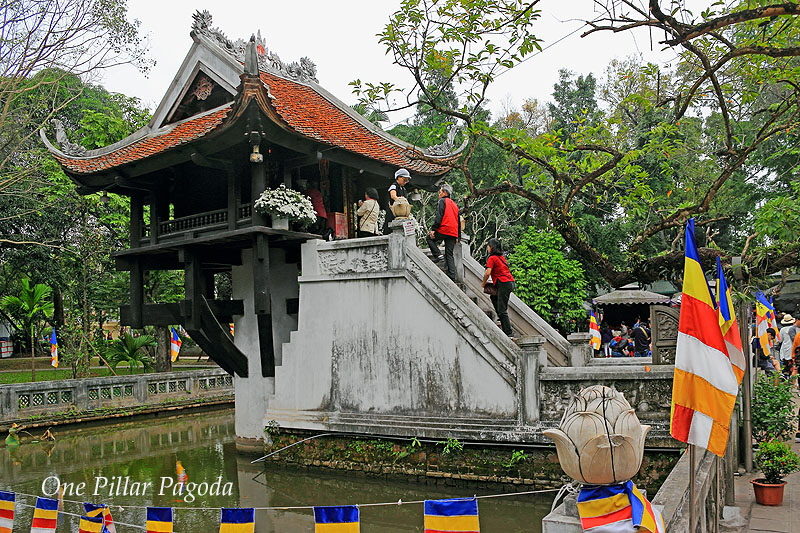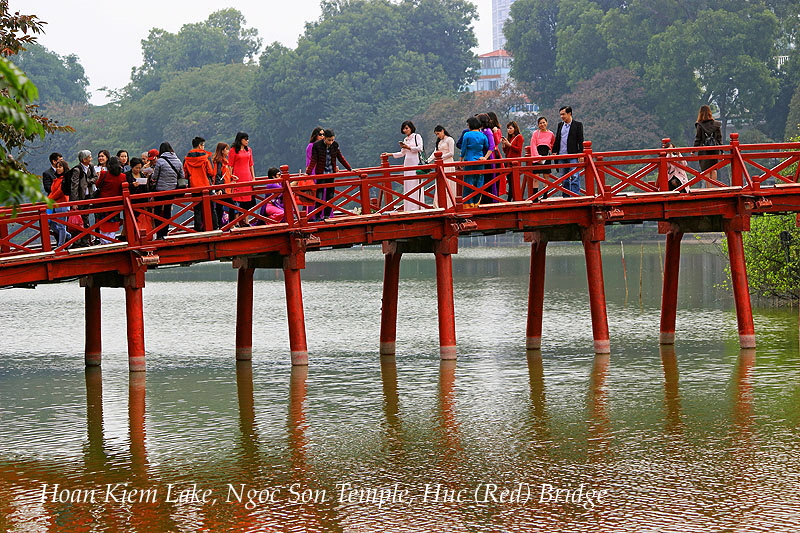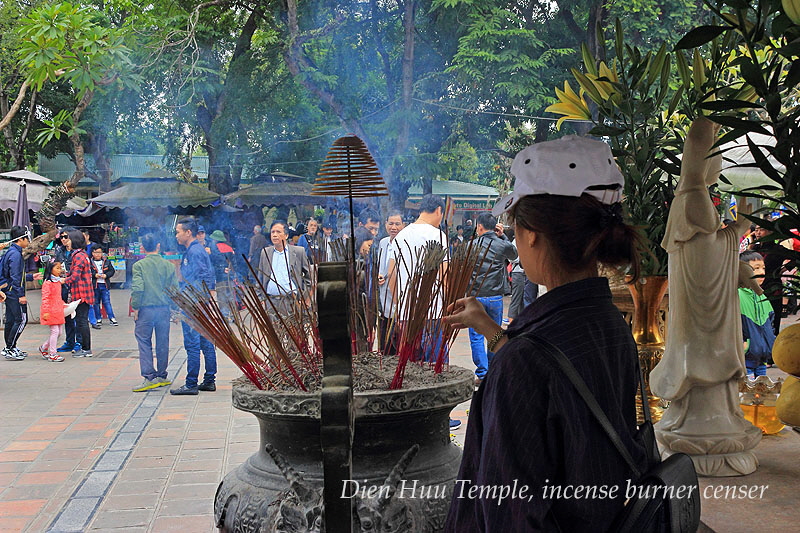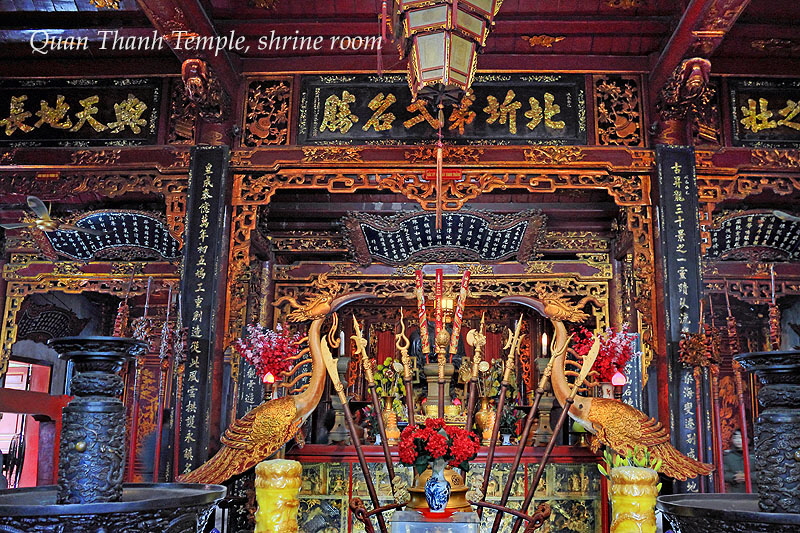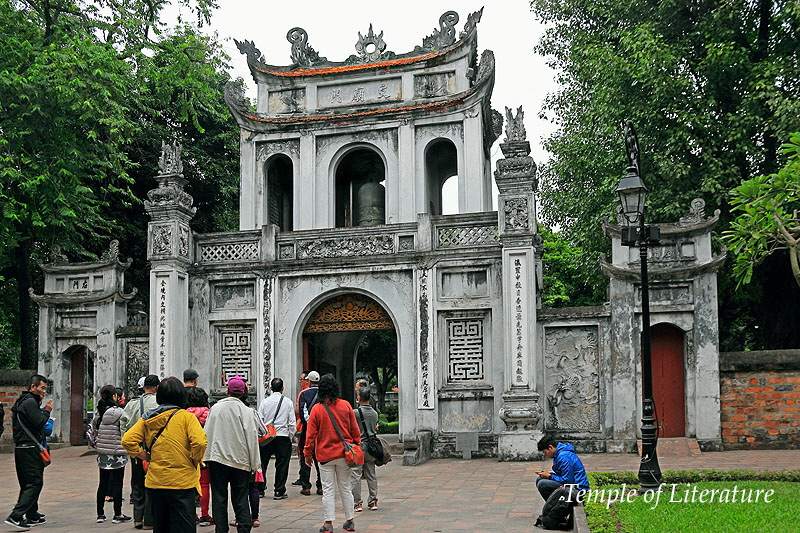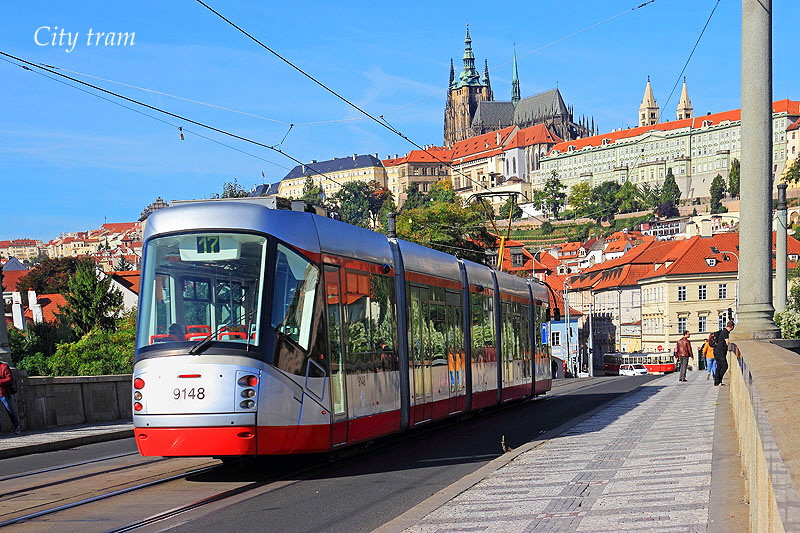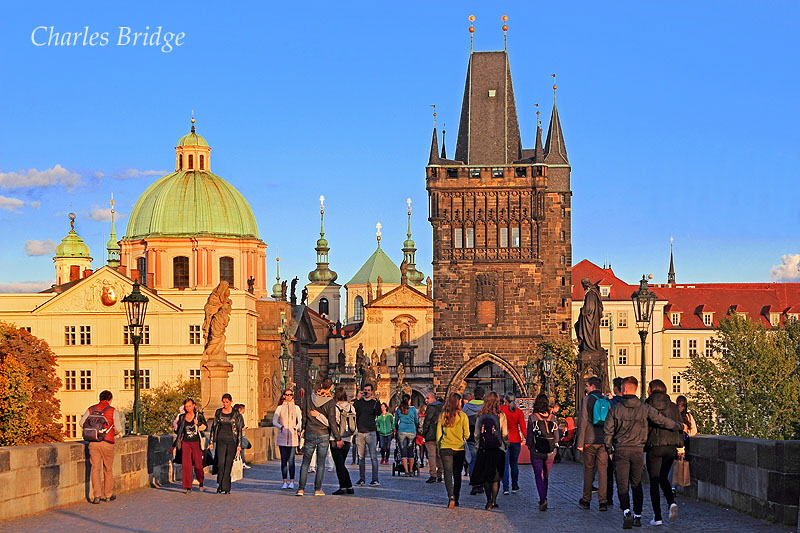Temple of Literature
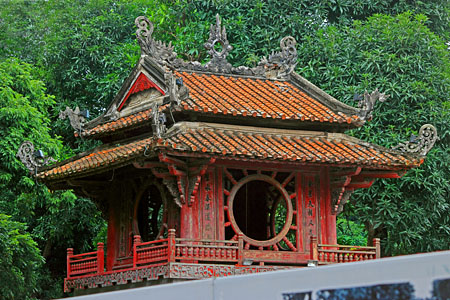
On my journey to Northern Vietnam, my port of entry was the capital Hanoi, a city immersed in culture and history. And as a culture addict myself, I love ancient temples, and in Hanoi, I had my fill of it. There are more than fifty, and during my three-week stay, I was privileged to visit fourteen, and the ones featured here are my favourites.
Although I visited most of them by myself, having a personal guide for a few days also helped, as he accompanied me to a couple of temples, which enhanced the experience. His commentary as well as having enjoyable chats increased my insight into the country’s traditions and lifestyles.
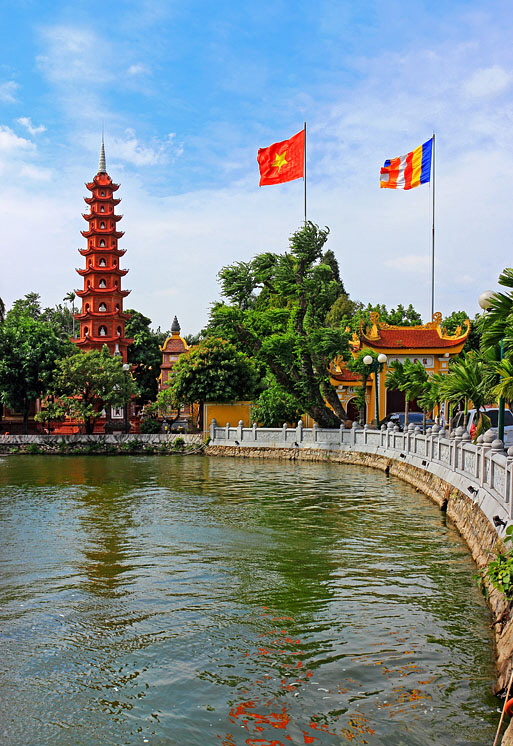
Tran Quoc Pagoda
Hanoi Temples - a culture addicts haven
Vietnamese Buddhism embraces elements from India, Sri Lanka, China, and other east Asian countries as far as Japan.
With the integration of Taoist and Confucian traditions as well as mythology, the Vietnamese have accepted these differences and without much contradiction. In fact, the religious culture extends not only to worshipping several deities, but also historical figures, philosophers, and animals. The tiger, turtle, dragon, and the mythical phoenix are revered as guardians, each representing different virtues and powers.
Many temples are architecturally quite different, but the
inner shrines and altars look similar with the variety of statues of the Buddha as well as other divinities. And of course, the lighting of incense sticks and fruit offerings made to gods is a common sight throughout.
Buddha statue
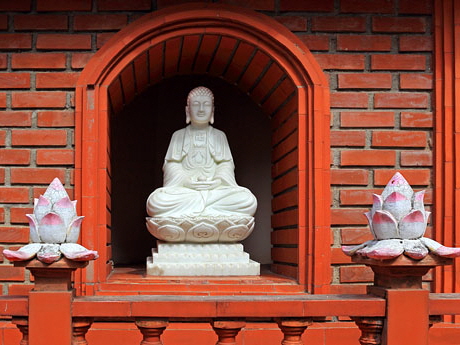
Various deities are worshipped, including animals
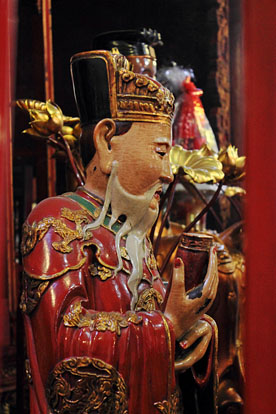

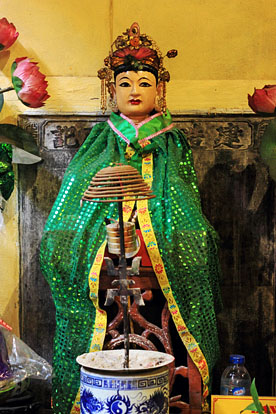

Most of us are aware of the dress code and being respectful when entering religious sites anywhere in the world. And many Vietnamese temple sites also have a ‘code of conduct’ displayed at the entrance.
The ones in Hanoi go a little further, with a list of 10 things to do, and another 10 things not to do.
One of the charming things that attract me to places of worship is that they represent tranquillity, and also a refuge from the noise and frenetic life that goes on outside its compound. And wherever I went,
I felt welcomed by worshippers, workers attending to the temple upkeep, and monks at the premises.
‘Red Bridge’ to Ngoc Son Temple
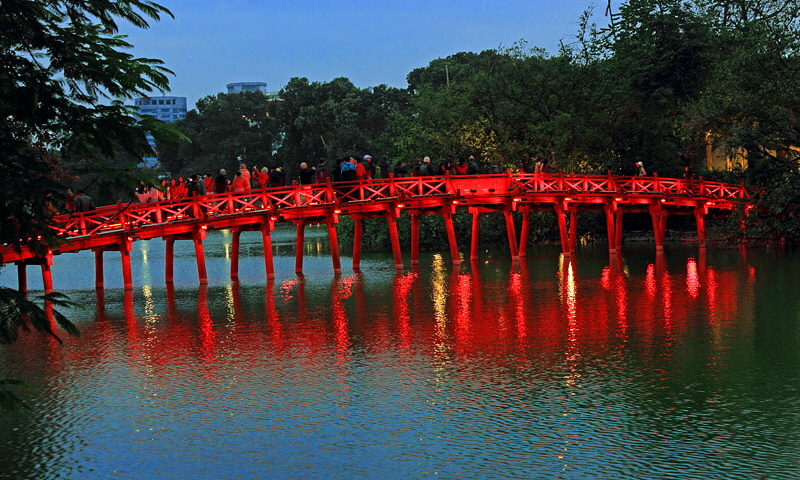
Ngoc Son Temple
I began at the 18th century Ngoc Son Temple (Temple of the Jade Mountain), on the Hoan Keim Lake. Built on a small islet, it is accessible via the Huc Bridge (red bridge) and is one of the most visited sights in the city, as well as being centrally located. It’s not a particularly large site, but beautiful especially at night, when the red bridge is lit and reflects on the lake.
You enter through a couple of gateways with relief paintings of the dragon, tiger, and turtle on the walls. In many temples, as here, animal figures, especially the turtle is symbolic in religious culture and folklore. There is even an old taxidermied turtle (taken from the lake) on display. The main shrine room has two large gilded phoenixes and statues of divine figures and philosophers. As it draws in more tourists than worshippers, there is a small entrance fee.
Ngoc Son Temple
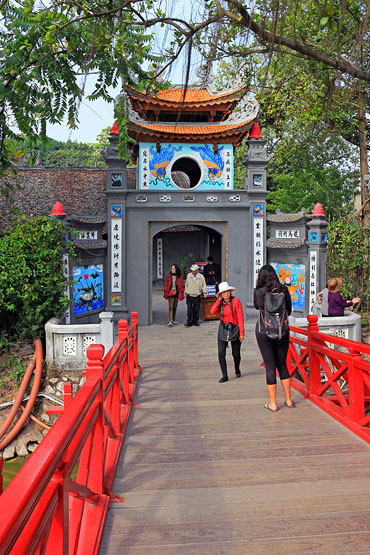
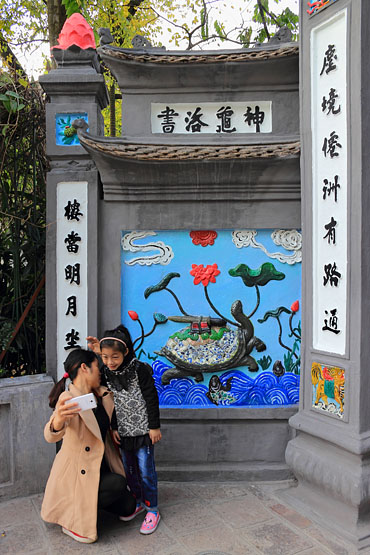
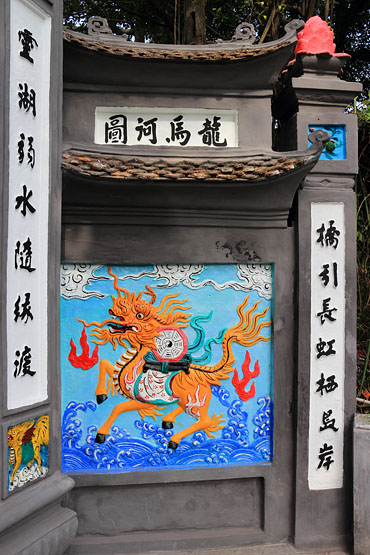
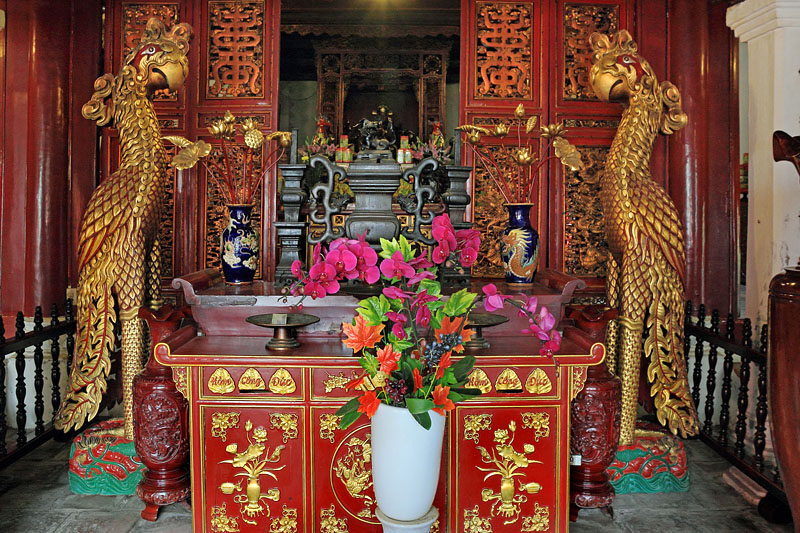
Ngoc Son Temple, main shrine room
____________________________________________________________________________________________________
Bach Ma Temple
Considered the city’s oldest religious site, Bach Ma Temple literally meaning ‘White Horse Temple’ was built by Emperor Ly Thai in the 10th century, to honour a white horse that led
him to its location. Much of it was reconstructed in the 18th century, but some of the ancient carvings are still visible.
Entering through beautiful old red wooden doors, you’re in elaborate shrine rooms with carved red pillars and roofs with decorative timber beams. One altar is dedicated to Confucius, the Chinese philosopher and political figure who lived around 550BC. Another shrine room has three beautiful images of ‘mother goddesses’ representing water, sky, and forest.
A courtyard adds to the serene atmosphere of the place. The highlight here is the glistening legendary white horse sculpture with two phoenix statues on either side and surrounded by several other images.
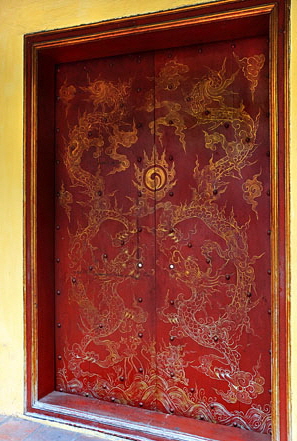
Elaborate red wooden doors
‘Mother goddesses’, Bach Ma Temple
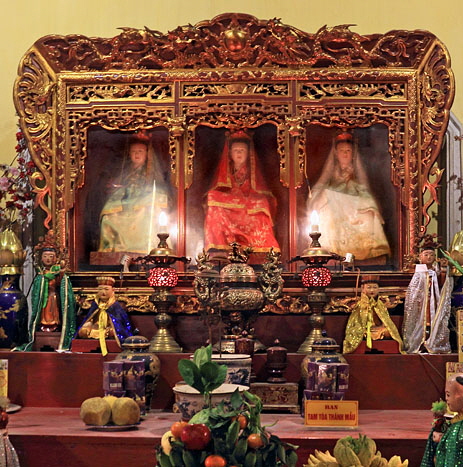
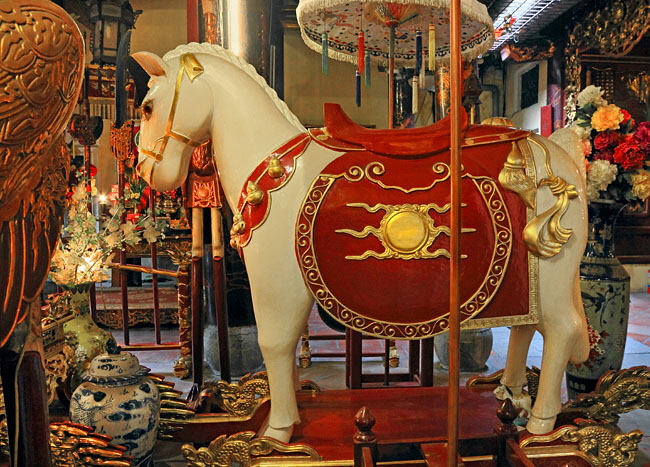
___________________________________________________________________________________________________________________________________________
One Pillar Pagoda, at Dien Huu Temple
This attractive wooden structure, standing on a single stone pillar in a lotus pond, was built during the reign of Emperor Ly Thai Tong in 1049. The unusual little pagoda was designed to resemble a lotus flower blooming out of the water, symbolising purity in Buddhist philosophy. It had to go through several stages of renovations to survive over a millennium. Nearly destroyed by the French, it was restored by President Ho Chi Minh. Today it’s also one of Vietnam’s most important historic and religious sites, attracting thousands from all over Asia, who go up the steps into the small shrine to worship. As they continuously enter inside to offer prayers, visitors should not follow them and obstruct the flow, unless they are going to worship in there.
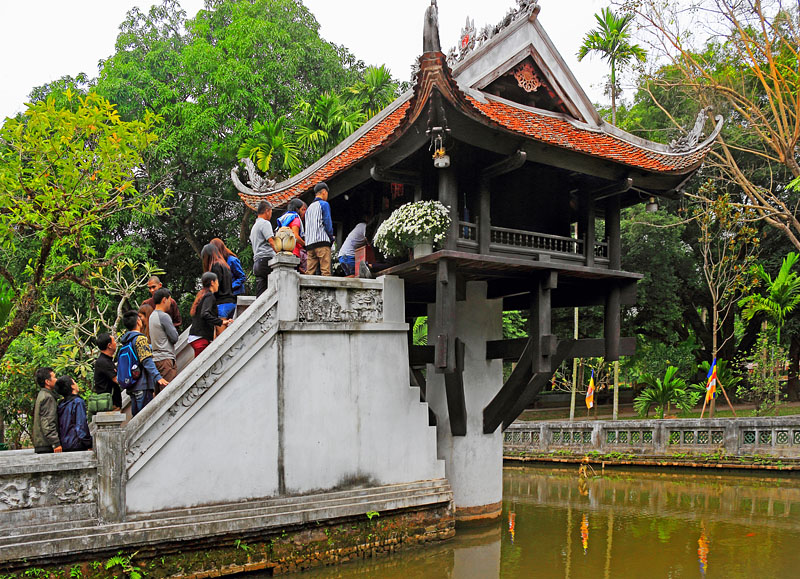
The pagoda is located at the Dien Huu Temple site, close to the Ho Chi Minh Complex. The Dien Huu Temple itself is not large, with one shrine room packed with statues. And in the courtyard is a figure of Quan Am - a bodhisatva of compassion (bodhisatva in Buddhism meaning ‘one seeking awakening’). It’s a good idea to come here early, as it soon gets crowded with coach loads of tourists and pilgrims arriving.
Dien Huu Temple, Quan Am statue
Dien Huu Temple, shrine room
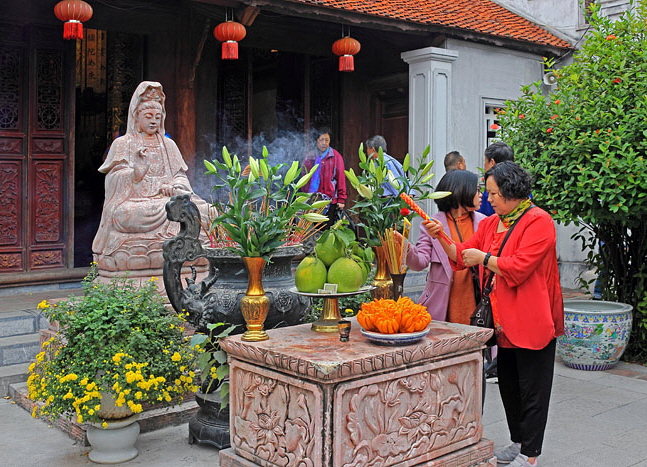
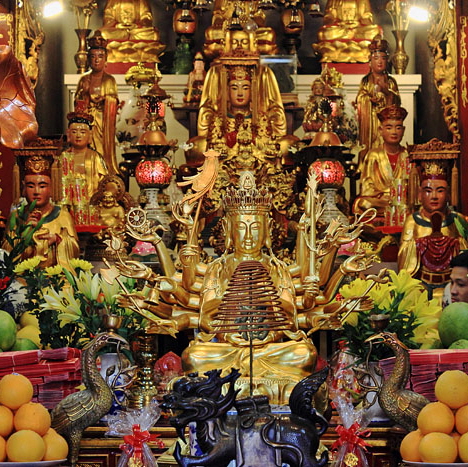
___________________________________________________________________________________________________________________________________________
Chua Quan Su Temple (Ambassador’s Pagoda)
Chua Quan Su Temple, also known as The Ambassador’s Pagoda, welcoming Buddhist ambassadors from around the world, is one of the lesser visited temples by tourists, yet worth a look. Built in the 17th century, today it is the headquarters of the Vietnamese Buddhist Association. Enter through a yellow hue pagoda style building facade into a lovely courtyard, with trees, potted plants, and huge incense burners. As there was only a couple of worshippers here, the gardener attending to the plants, offered to show me around. The steps leading to the large shrine hall have orante woodwork and are architecturally beautiful to look at. Inside are statues of several deities, including a golden image of the ‘thousand-armed’ Bodhisattva Avalokisteshvara - a god of compassion
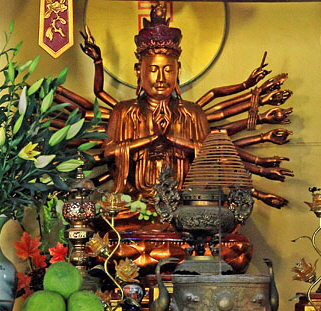
Bodhisattva statue
Chua Quan Temple, courtyard
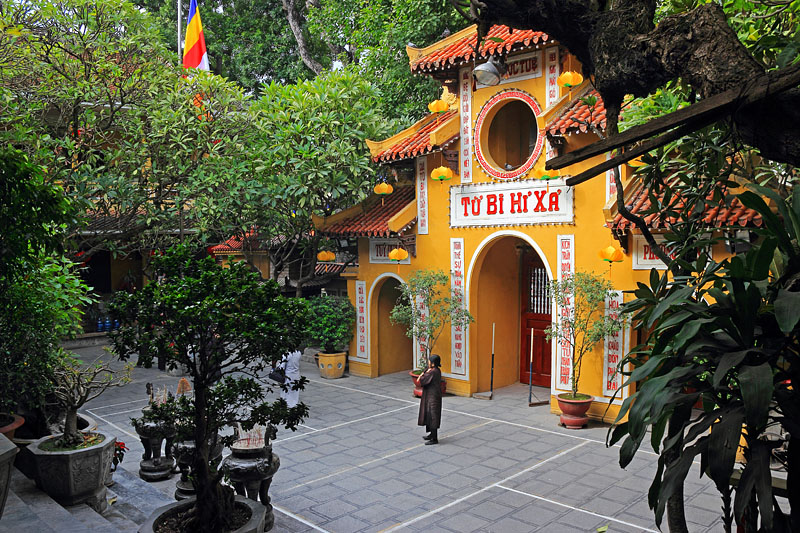
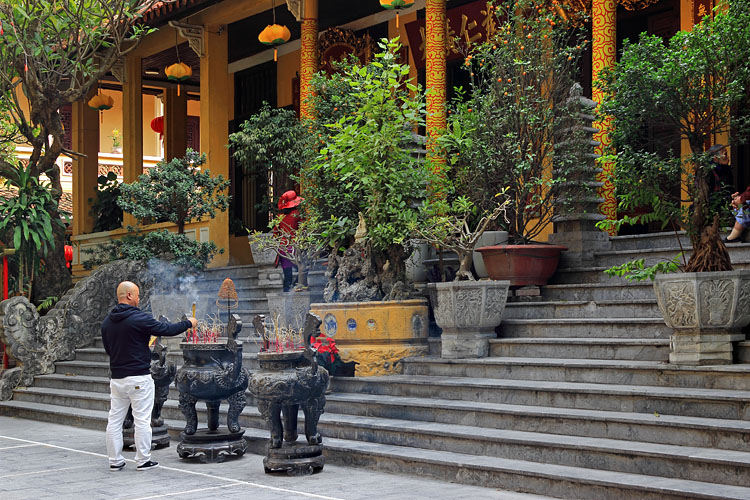
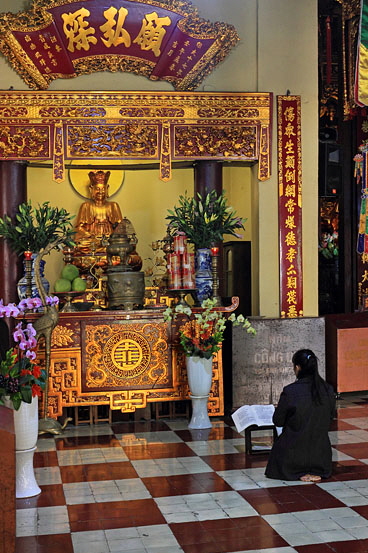
___________________________________________________________________________________________________________________________________________
Tran Quoc Pagoda
Situated on an islet, in the corner of the city’s West Lake, Tran Quoc Pagoda is reached by a stone bridge. Its picturesque location alone makes it one of my favourite places in Hanoi. It’s also one of the oldest (built nearly 1500 years ago), and may not look so, as it has gone through several stages of restoration over the centuries.
Inside, in the shrine rooms are several sculptures of the Buddha, disciples, and also a beautiful altar to the three ‘mother goddesses’. A small museum houses a collection of historic relics. The landscaped gardens here are lovely, with a profusion of shrubs, bonsai trees, and other greenery, and decorated with animal sculptures. On the grounds is also a sacred Bodhi Tree (Bo tree, a symbol of Buddhism), a cutting which was brought from India.
The centre piece of the temple site is a hexagonal 11 tier red-brick pagoda reaching some 15 metres high, with white Buddha statues placed in each tier. The pagoda is surrounded by several other smaller ones, which are tomb towers.
My guide suggested visiting the site at sunset for some dramatic photos, but my timing didn’t allow for such an occasion. Instead, I had to be content with a short walk along the lakeside to view the vicinity scenery.
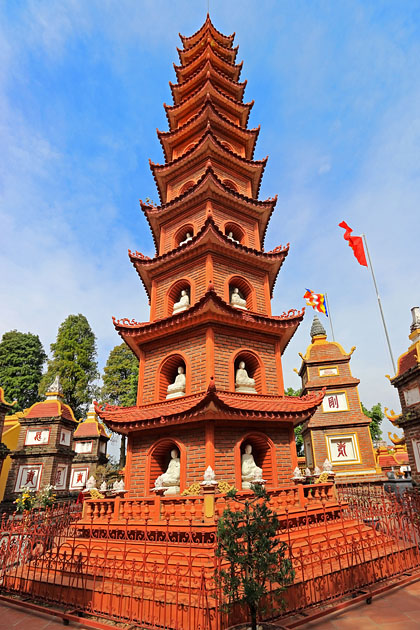
’Mother goddesses’ figures
Sacred Bodhi Tree
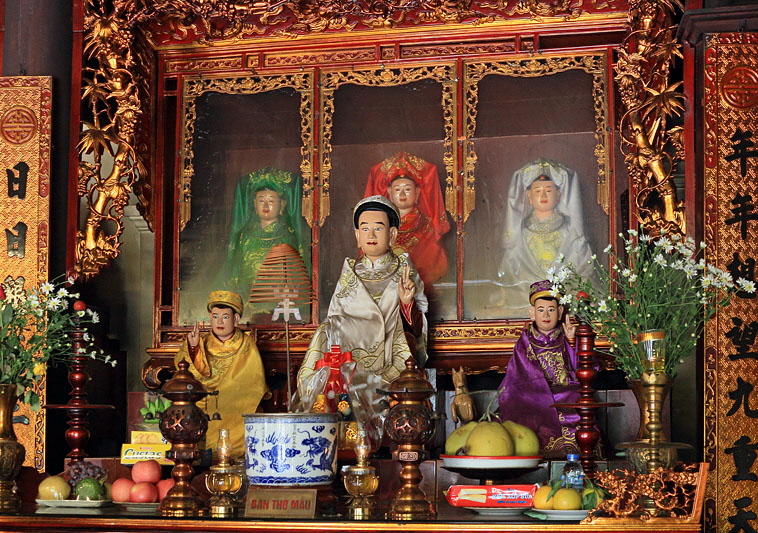
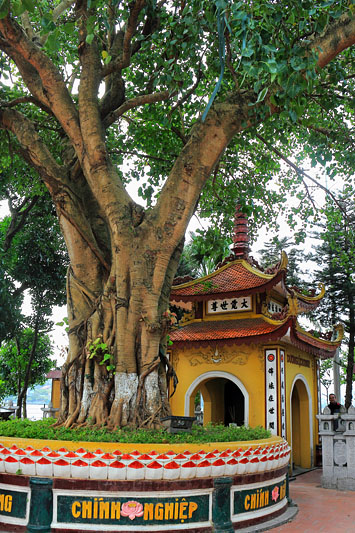
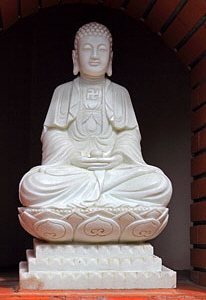
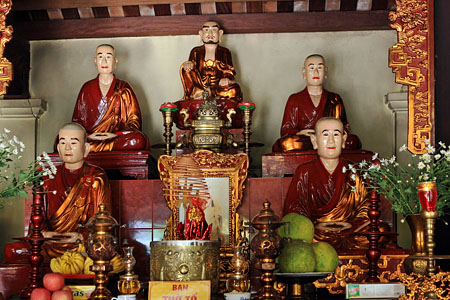
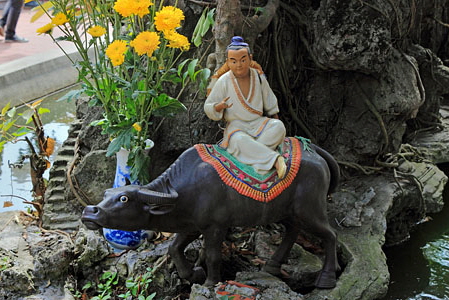
Tran Quoc Pagoda, Buddha statue, and shrine room deities
Garden sculptures
___________________________________________________________________________________________________________________________________________
Quan Thanh Temple (Tran Vu)
Close to the Tran Quoc Pagoda and the West Lake, is the Quan Thanh Temple (Tran Vu). Before you enter through the imposing three-gate stone built entrance, pause to admire in front, the four large pillars, with relief sculptures of the dragon, tiger, unicorn, and phoenix - popular in traditional Vietnamese culture. Then go through the gateway and into the lovely vast courtyard, shaded by a banyan trees and mango trees. There are many other trees, plants, and statues that are a decorative feature in the compound.

In the main shrine hall of this 11th century Taoist temple is the famous 4-metre tall black bronze statue of god Huyen Thien Tran. There are several other deity statues, golden phoenix, relief sculptures, serpent figures, and works of art carved on doors, pillars and roofs, both inside and outside in the courtyard. I found this place a pleasant and peaceful place to be at, to both reflect and relax.
Quan Thanh Temple, courtyard
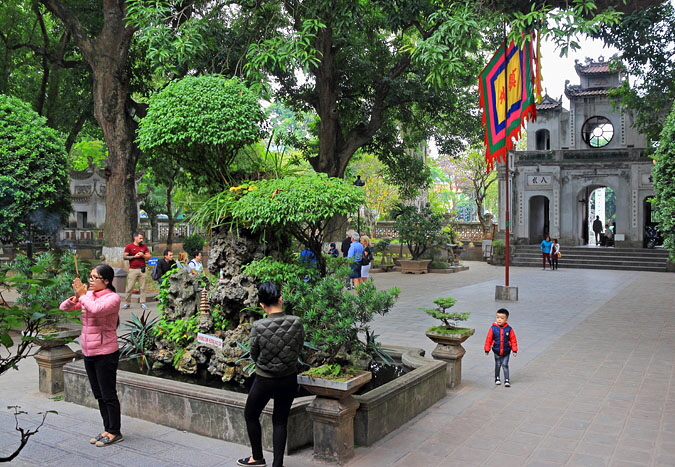
Courtyard sculptures
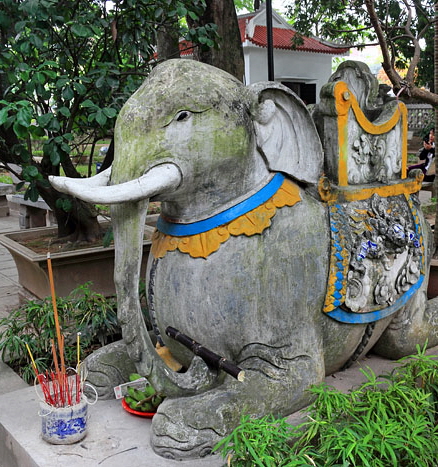
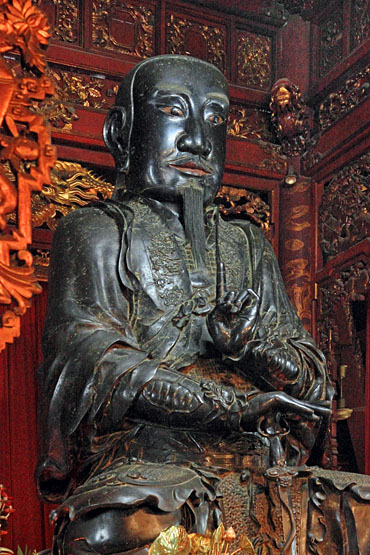
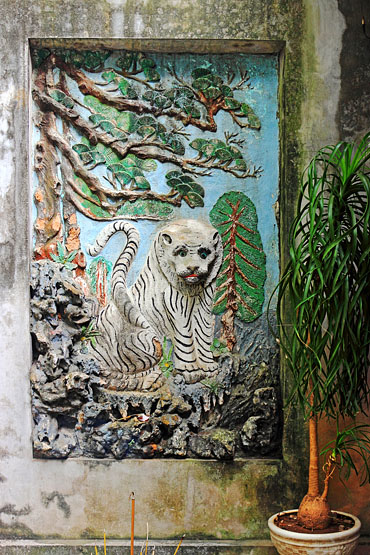
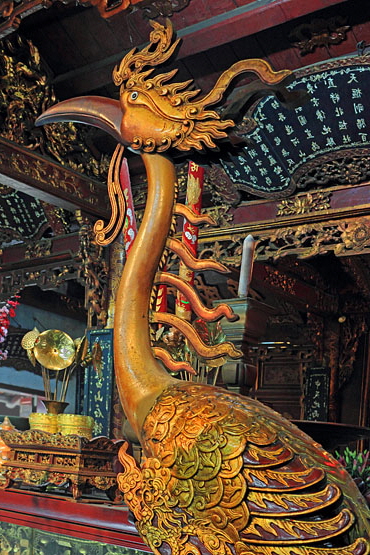
Huyen Thien Tran statue
Temple courtyard, relief sculpture
Large Phoenix sculpture in shrine room
___________________________________________________________________________________________________________________________________________
Temple of Literature
This is a major tourist attraction, and my guide brought me here early morning to avoid the crowds, and so was able to spend a good hour exploring. It is one of the best preserved and exudes traditional Vietnamese architecture.
Rather than a place of worship, the temple was founded in 1070 by Emperor Le Thanh Tong as a university and dedicated to Confucius, scholars and philosophers. Originally exclusive to royalty and the elite, many of the privileged and successful students have had their names etched onto turtle stalae (which are said to bring good luck to the students).
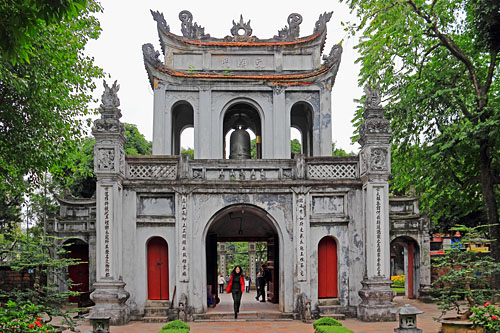
Temple of Literature main entrance
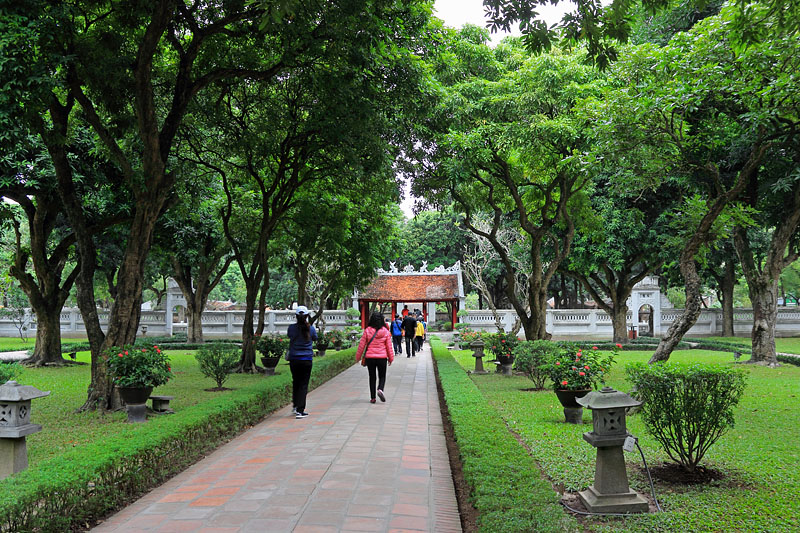
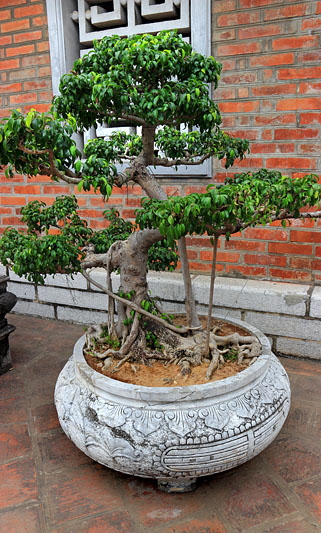
Beautifully landscaped gardens
Bonsai in ornamental pot
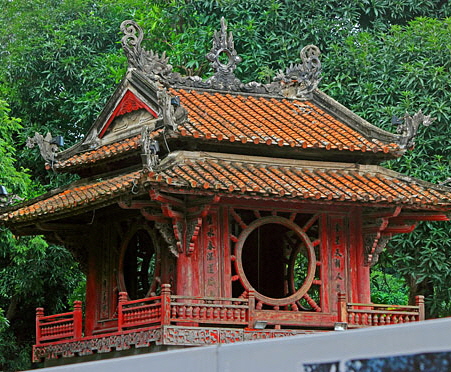
Red wooden gateway, cultural symbol of Hanoi
The large complex has five courtyards, with pavilions and altars. And the beautifully landscaped gardens, with tall trees, neatly trimmed hedges, bonsai, flora, and a lily pond add to the beauty. At the entrance to the second courtyard, is the elaborate red wooden gateway set on four pillars, which has become a cultural symbol of Hanoi. The image has also been used in the 100,000 Dong banknote.
Inside the main shrine hall, are statues of Confucius and followers, and two bronze sculptures of turtles, and standing on it large phoenixes. On the second level are more statues, with courtyard and garden views from the balconies. What’s remarkable is that after a thousand years, the site has still managed to retain much of its ancient appearance.

Turtle stalae
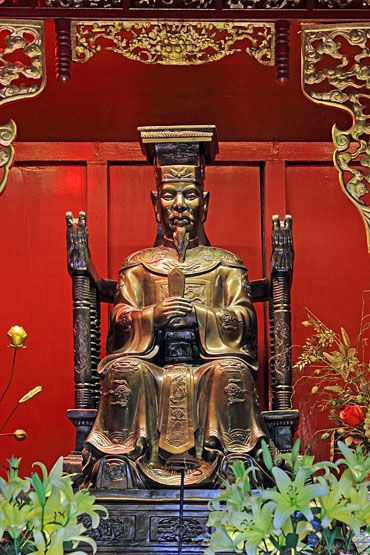
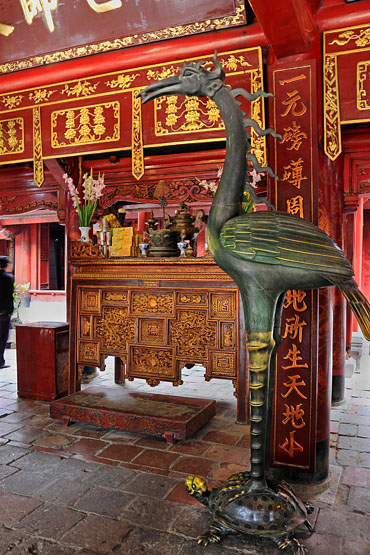
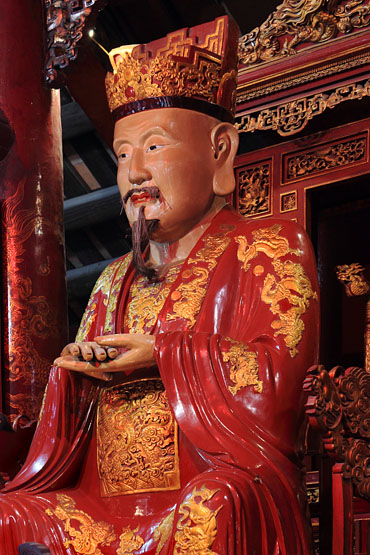
Confucius’s disciple statue
Phoenix on turtle sculpture
Confucius statue
___________________________________________________________________________________________________________________________________________
Saint Joseph’s Cathedral
Vietnam has a catholic population of about four million. In complete contrast to exploring Buddhist temples, I wasn’t leaving without a visit to Hanoi’s oldest church - Saint Joseph’s Cathedral. A landmark of the colonial period, it was built during French rule in the late 19th century.
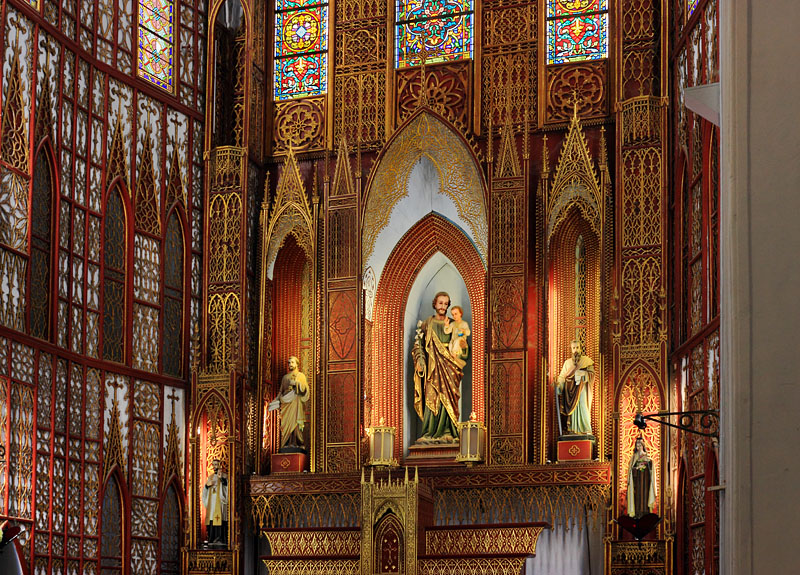
Its gothic style architecture was inspired by the Notre-Dame of Paris. Despite the wars that destroyed many parts of Hanoi, the cathedral has managed to survive and is in a good state. Opposite the building, in the churchyard, is a statue of Mother Mary, and inside are several beautiful tall stained-glass windows. I was there one Sunday, when hundreds of families in colourful attire, filled in for morning mass. Later as the crowds spilled out and mounted their bikes (some up to two adults and three children on one) and started to leave, others were taking photos, or socialising in small groups. My eye focused on watching two newly-wed couples, having photo sessions in the compound. The couples were happy to pose for anyone aiming their phones at them. It was nearly midday, and leaving the church premises, the lovely waft of aromas coming from the street food stalls nearby coerced me in that direction.
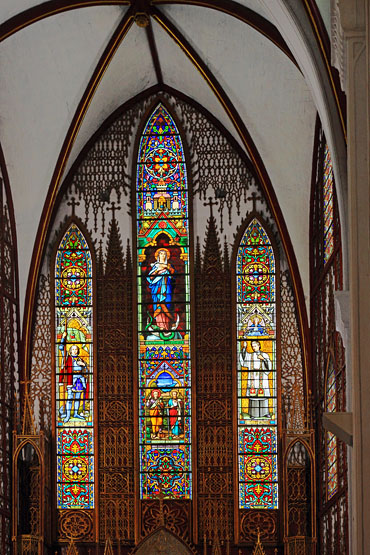
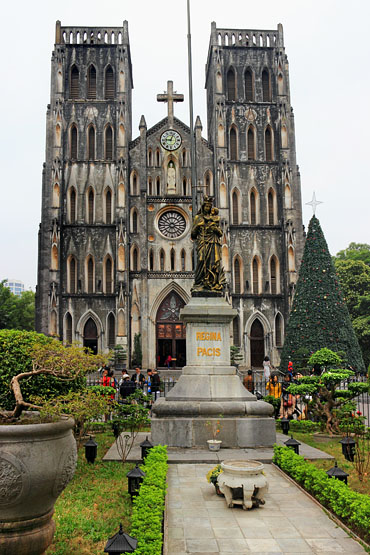
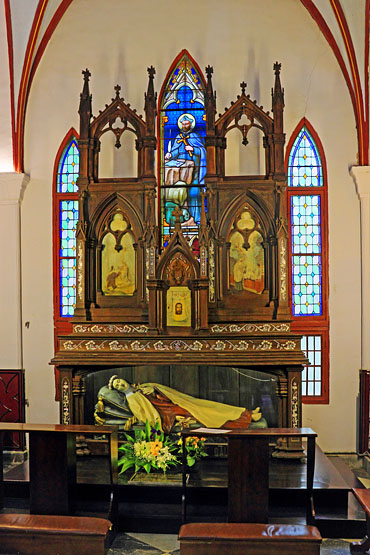
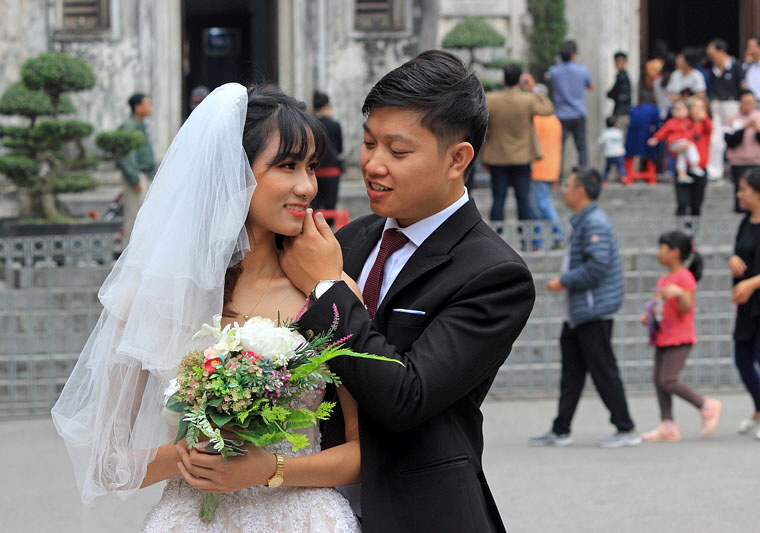
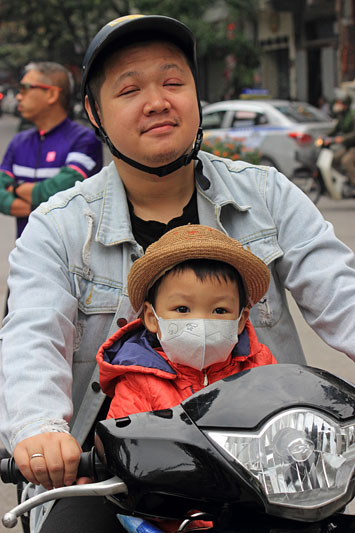
Newly-wed couple outside cathedral
Another thing I also loved about visiting the Hanoi temples, was that they were never overcrowded (except perhaps Ngoc Son Temple). However, I was informed that they do get busy during festivals, like Tet - Vietnamese Lunar New Year when the celebrations are a feast of colour and enjoyment.
Visiting places of any religion offers an insight into the culture and traditions of the people there. And my time at these few sites was both an enriching and satisfying experience.
20 images here ©JAYTRAVELPHOTOS
© COPYRIGHT notice. The images on this site are for viewing only.
To purchase any, for personal or commercial use, please contact us at jaytravelphotos@aol.com
